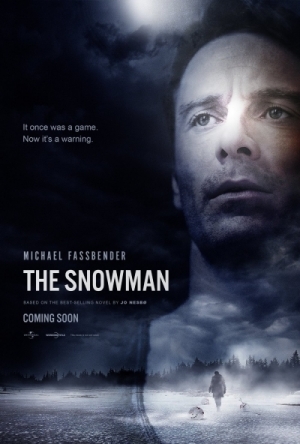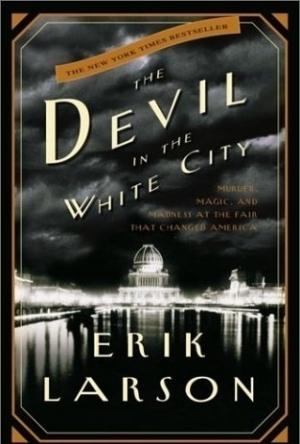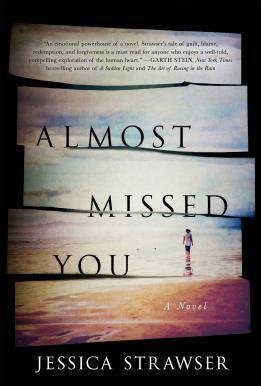
Loecsen - Audio travel phrasebook
Travel and Education
App
7 key features of the app: 1 - 400 phrases, arranged by theme, to help you get by in 40 languages...

MosaLingua Apprendre l'Anglais
Education and Travel
App
***Learn English in no time!*** MosaLingua's effective and addictive teaching method will help you...

Paytm - Payments & Wallet
Shopping and Lifestyle
App
#PaytmKaro for the fastest recharge, bill payment & shopping experience. Quick, easy and secure,...

Ease My Mind by Shout Out Louds
Album Watch
In their 15 years as a band, Shout Out Louds have toured the world many times. The band played a...
alternative rock

Learn French - MosaLingua
Education and Travel
App
Learn French in no time! MosaLingua's effective and addictive teaching method will help you memorize...

Learn Spanish: MosaLingua
Education and Travel
App
***Learn Spanish in no time! MosaLingua's effective and addictive teaching method will help you...
Bob Mann (459 KP) rated The Snowman (2017) in Movies
Sep 29, 2021
A story by bestselling Nordic writer Jo Nesbø;
Gorgeously photogenic snowy scenes of Oslo and Bergen;
A stellar cast (Michael Fassbender (“Alien: Covenant“); Rebecca Ferguson (“Mission Impossible: Rogue Nation“); J.K. Simmons (“Whiplash“); Toby Jones (“Dad’s Army“); Chloe Sevigny (“Love and Friendship“); Charlotte Gainsbourg (“Independence Day: Resurgence“, very sexy as Fassbender’s ex-squeeze) and even Val Kilmer (“Top Gun”, whose mother – interesting fact – is actually Swedish).
snowman2
That sinking feeling when you realise you’ve been drinking all night and its too late for bed before work.
And while these elements congeal in the snow together quite well as vignettes, the whole film jerks from vignette to vignette in a most unsatisfactory way. I haven’t read the book (which might be much better) but the inclusion in the (terrible!) trailers of key scenes that never made the final cut (where was the fire for example?, the fish? the man trap?) implied to me that the director (Tomas Alfredson, “Tinker, Tailor, Soldier, Spy”) and screenwriting team – Peter Straughan (also “Tinker, Tailor”), Hossein Amini (“The Two Faces of January“) and Søren Sveistrup (TV’s “The Killing”) – either didn’t have (or didn’t agree on) the direction they wanted the film to go in.
Film Title: The Snowman
Arve Stop (J.K. Simmons) and Katrine (Rebecca Ferguson) having a “Weinstein moment” at the hotel.
Nesbø (and indeed most crime writers these days) litter their work with damaged cops…. you have to question whether the detective application form has a mandatory check-box with “alcoholic and borderline psycho” on it!. This film is no exception. Fassbender plays Nesbø’s master sleuth Harry Hole: an alcoholic insomniac well off the rails between homicide cases. “If only Oslo had a higher murder rate” bemoans his boss (Ronan Vibert). He joins forces with newby officer Katrine Bratt (Rebecca Ferguson), who has her fair share of mental demons to fight, in investigating a series of missing person/murder cases. The duo unearth a link between the cases – all happen when the snow starts to fall and to particular types of women, with the protagonist leaving a snowman at the scene.
snowman5
One of the cuter snowmen… they get worse… much worse.
The plot is highly formulaic – I guessed who the killer was within about 20 minutes. But what makes this movie stand out, for all the wrong reasons, is that it has one of the most stupid, vacuous, flaccid, inane, ridiculous … (add 50 other thesaurus entries)… endings imaginable. My mouth actually gaped in astonishment!
There are also a surprisingly large number of loose ends you ponder after the film ends: why the “Snowman”‘s fixation with Harry?; what was with the “Vetlesen cleaner” subplot? How is Star Trek transportation possible in Norway? (But wait… “Telemark”… “Teleport”…. coincidence????? 🙂
On the plus side, there is some lovely Norwegian drone cinematography – (by Australian Dion Beebe (“Edge of Tomorrow“) – that immediately made me put “travel by winter train from Oslo to Bergen” on my life-map. The music by Marco Beltrami (“Logan“) is also effective and suitably Hitchcockian.
If you like your films gory, this one is definitely for you, with some pretty graphic content that (for those who like to cover their eyes) is cut to so quickly by editors Thelma Schoonmaker (“The Wolf of Wall Street“) and Claire Simpson (“Far From The Madding Crowd“) that your hands won’t have time to leave your lap! I remember this being a feature of a previous Nesbø adaptation (the much better “Headhunters” from 2011) but here it goes into overdrive.
snowman1
One of my favourite actresses – Rebecca Ferguson, curiously playing much “younger” in this film than she appears in her previous hits.
Overall this was a rather disappointing effort that was heading for a FFf rating. But just because of that ending I’m knocking a whole extra Fad off!
Hadley (567 KP) rated The Devil in the White City: Murder, Magic, and Madness in Books
Jan 18, 2021
He's been a doctor and a licensed pharmacist, who then conned an old couple into selling their drug store to him where he preyed on young girls and ignorant customers that would buy whatever Holmes would tell them to buy, whether it were real or fake tonics.
He was a building owner who had a murder hotel secretly built with " a wooden chute that would descend from a secret location on the second floor all the way to the basement... ", "a room next to his office fitted with a large walk-in vault, with airtight seams and asbestos-coated iron walls. A gas jet embedded in one wall would be controlled from his closet...", "a large basement with hidden chambers and a sub-basement for the permanent storage of sensitive material. "
He owned and ran an alcohol-treatment company known as the Silver Ash Institute that claimed to have the cure for alcoholism.
He was a traveling business man, who had two wives and two children. He established the Campbell-Yates Manufacturing Company, which made nothing and sold nothing.
He was also labeled as America's first serial killer. His body count is unknown even today; his victims were frequently young women, which included stenographers and house wives. He was best known for convincing people who trusted him to sign him as the beneficiary of their life insurance policies, only to kill them and make it seem an accident so he could collect the money.
Holmes grew up in a small farming village in New Hampshire, where he briefly spoke about an early fear of a human skeleton that hung in a doctor's office: " 'I had daily to pass the office of one village doctor, the door of which was seldom if ever barred,' he wrote in a later memoir. 'Partly from its being associated in my mind as the source of all the nauseous mixtures that had been my childish terror (for this was before the day of children's medicines), and partly because of vague rumors I had heard regarding its contents, this place was one of peculiar abhorrence to me.' "... "Two children discovered Mudgett's [Holmes' real last name] fear and one day captured him and dragged him 'struggling and shrieking' into the doctor's office. 'Nor did they desist,' Mudgett wrote, 'until I had been brought face to face with one of its grinning skeletons, which, with arms outstretched, seemed ready in its turn to seize me. It was a wicked and dangerous thing to do to a child of tender years and health,' he wrote, ' but it proved an heroic method of treatment, destined ultimately to cure me of my fears, and to inculcate in me, first, a strong feeling of curiosity, and, later, a desire to learn, which resulted years afterwards in my adopting medicine as a profession.' "
Erik Larson's fourth book, the Devil in the White City, is only partly about Holmes and his dark trail of murder and lies. The story told is mostly centered around the planning and building of the 1893 World's Fair. The prologue opens with one of the architects aboard a ship long after the fair has ended - - - 1912 to be exact- - - where he begins to write of the fair in his diary. The next chapter continues on with Chicago competing against other major cities to win the rights to host the World's Fair. Chicago was not the ideal place for the fair because it was known for it's crime and slaughter houses - - - this was exactly why the politicians wanted it so badly there, so it would help to lighten the image of Chicago for the rest of the world. Even the local Whitechapel Club that had sprouted up after the infamous murders by Jack the Ripper, were excited to win the rights to host the fair in their city, and celebrated in a macabre way:
"Upon learning that Chicago had won the fair, the men of the Whitechapel Club composed a telegram to Chauncey Depew, who more than any other man symbolized New York and its campaign to win the fair. Previously Depew had promised the members of the Whitechapel Club that if Chicago prevailed he would present himself at the club's next meeting, to be hacked apart by the Ripper himself - - - metaphorically, he presumed, although at the Whitechapel Club could one ever be certain? The club's coffin, for example, had once been used to transport the body of a member who had committed suicide. After claiming his body, the club hauled it to the Indiana Dunes on Lake Michigan, where members erected an immense pyre. They placed the body on top, then set it alight. Carrying torches and wearing black hooded robes, they circled the fire singing hymns to the dead between sips of whiskey. The club also had a custom of sending robed members to kidnap visiting celebrities and steal them away in a black coach with covered windows, all without saying a word.
The club's telegram reached Depew in Washington twenty minutes after the final ballot, just as Chicago's congressional delegation began celebrating at the Willard Hotel near the White House. The telegram asked, 'When may we see you at our dissecting table?' "
There are chapters in-between, technically reading like a side story, that tell us about Holmes and his misdeeds in Chicago, but there just wasn't enough about Holmes that I could consider this a True Crime book, nor an informative book about Holmes. Unfortunately, when the reader begins to really dwell into the story of Holmes, it's quickly ended by having two or more chapters about the building of the World's Fair. One interesting point about the story is that the reader does get to see how many inventions were brought to light because of the Fair, such as the invention of the Ferris Wheel. Larson's writing is very coherent and the descriptions are so well done that the reader is practically transported back to the late 1800s, yet, before I finished the book, I felt misled by the title... then coming across everything that happened to not only the Fair, but the people who were involved with it, it's hard not to wonder if the whole thing was cursed, thus the Devil being in the White City.
One of the side stories I did really enjoy was the slow unfolding of a man named Prendergast. A delusional young man who ran one of the groups of paperboys in Chicago, who was also obsessed with politics, became a determined supporter of Mayor Harrison; after Harrison was voted into office again, Prendergast believed it was because of him and the letters he sent out to numerous politicians and potential voters. Prendergast also believed he deserved a chair on the council for Harrison's re-election, for which he even showed up at City Hall to take over. This incident was the straw that broke the camel's back for Prendergast - - - he was humiliated when the people there laughed in his face. Prendergast then decided to take matters into his own hands, and bought a revolver. The day before the Fair would end, Prendergast showed up at Harrison's home and shot him. Harrison died minutes later. Prendergast turned himself in for the murder as soon as he left Harrison's residence. When asked why he had done it, Prendergast responded: " ' Because he betrayed my confidence. I supported him through his campaign and he promised to appoint me corporation counsel. He didn't live up to his word.' "
This book has been voted as a top True Crime must-read novel. I don't agree with this. As I said before: Holmes' chapters are few; eighty percent of this book is about the building of the World's Fair. As a True Crime junkie, I didn't enjoy this one, but also as a history junkie, I enjoyed learning about the Fair and everything that happened. I can't recommend this book to TC fans or horror fans. It's mostly history and architecture.
Lee (2222 KP) rated John Wick: Chapter 3 - Parabellum (2019) in Movies
May 17, 2019 (Updated May 17, 2019)
Chapter 3 picks things up pretty much right from where chapter 2 ended. It's around 5:10pm, and a wounded John Wick is making his way through New York with his latest doggy friend alongside him. Excommunicado kicks in at 6pm, and he is clocked by various assassins as he moves through the streets, all preparing themselves for getting their shot at the $14 million. He takes care of the important stuff - making sure his dog is in safe hands and that his wounded shoulder is patched up - and every so often we cut to the administration room, where communications are sent out to all the assassins, paperwork gets stamped and a time check is announced. 20 minutes until excommunicado, 10 minutes, 1 minute, 5 seconds. It's an intense build up and you have no idea what's going to happen at 6pm, but you cannot wait to find out!
When 6pm arrives, it's not quite the all out war you're expecting. Instead, we get a bunch of nicely choreographed fights involving small groups of chancers, all keen to try their hand at taking out the legendary John Wick. We get book-fu, we get horse-fu, and we get a fight in a room full of knives and swords. Which is great, unless you're squeamish about anything involving sharp objects and eyeballs (that would be me then).
As much as I'd love to watch two solid hours of John Wick just kicking ass, there does need to be the odd break here and there, and there's a lengthy period where the brakes are slammed on somewhat. We get bogged down in more mythology, and while John tries to arrange safe passage to Casablanca in order to bargain for his life, an adjudicator arrives in New York to question those who seemingly broke the rules to help John in the last movie and serve suitable punishment on them.
When John hooks up with old friend Sofia (Halle Berry), things move up a gear once more. Sofia can more than hold her own in a fight and it's an impressive, albeit far too brief performance from Halle Berry. But it's her two dogs who manage to steal the show during a fight between John, Sofia and another bunch of goons. Repeatedly leaping out of nowhere and viciously taking guys down with a set of pretty impressive moves of their own. Going for the neck, pulling on arms, but mostly going for the crotch.
The final act resorts to simply providing a relentless onslaught of opponents for John to take out, and that's perfectly fine by me. Pausing for breath after each round (for our benefit as much as his!), before moving to the next. While not quite as impressive as the original movie, this was on the same level as chapter 2 for me. And I certainly haven't tired of seeing John Wick do his thing just yet.
Kristy H (1252 KP) rated Almost Missed You in Books
Feb 13, 2018
This novel definitely sucks you in right away. It's confusing and intriguing, as you're completely puzzled as to why Finn would run off and leave his beloved wife (and why would he take their son, too). In the beginning, I did not want to stop reading: the novel was completely addictive. Strawser slowly adds in additional details that thicken the plot, making Caitlin and her husband, George, as much as a part of the story as Finn and Violet. It's told in alternating points of view (Violet, Caitlin, Finn) and time periods, including after the kidnapping incident and before, leading up to Violet and Finn's history together. This effectively builds suspense and can drive you a tad insane, as a chapter in the past ends, leaving you dangling and wanting more details.
The problem for me was that, over time, the characters almost seemed their own worst enemies. Rather than a mystery/suspense novel, the book turns more psychological (nothing necessarily wrong with that) with each character bemoaning their various choices that have led up to this point. And seriously, they've made some stupid choices. It's one of those things where you want to scream: if you'd all just have talked to each other! Communication! Some of the ways of handling things seem awfully impractical for such serious issues (case in point: just about anything Caitlin does with her life, including her way of addressing the kidnapping).
Still, the novel continues to churn out some crazy twists, making it very interesting. The unveiling of Finn's past really carries the book about 3/4 through. You're continually wondering what happened, what he owes various characters, and why on earth he'd want to leave Violet (and take Bear).
As much as I enjoyed this novel and how suspenseful it was, I was frustrated by the characters - none of whom I cared for much at all beyond Violet. (I would have just strangled Finn if possible and potentially even Caitlin.) Again, some communication could have really saved some preposterous plot movements. There are a few times where characters seem to act way out of line for their development, etc. As the book nears a close, it drags on with their in-fighting and psychological messes, versus actual excitement, which was a little disappointing. I felt like we'd been through a lot of excitement for nothing and come out at the end with little but an emotional saga. The ending is awfully pat, too, and makes you think, really?
However, I truly did enjoy most of this book and found it incredibly suspenseful. It's easy to read and draws you in immediately. Even if you don't like all the characters, you'll be intrigued by their predicaments and the entire scenario. I'd certainly be interested in what Strawser comes up with next. 3.5 stars.
I received a copy of this novel from the publisher and Netgalley (thank you!) in return for an unbiased review; it is available everywhere as of 03/28/2017.
<center><a href="http://justacatandabookatherside.blogspot.com/">Blog</a>; ~ <a href="https://twitter.com/mwcmoto">Twitter</a>; ~ <a href="https://www.facebook.com/justacatandabook/">Facebook</a>; ~ <a href="https://plus.google.com/u/0/+KristyHamiltonbooks">Google+</a></center>;



